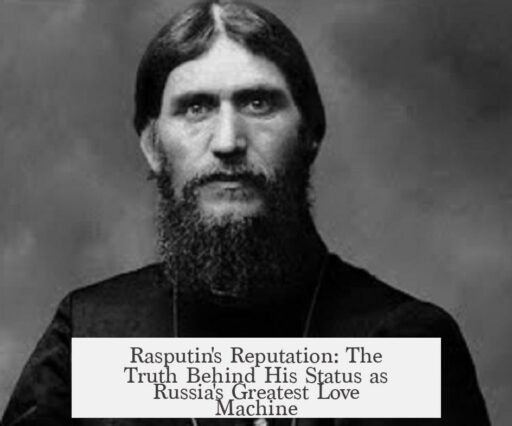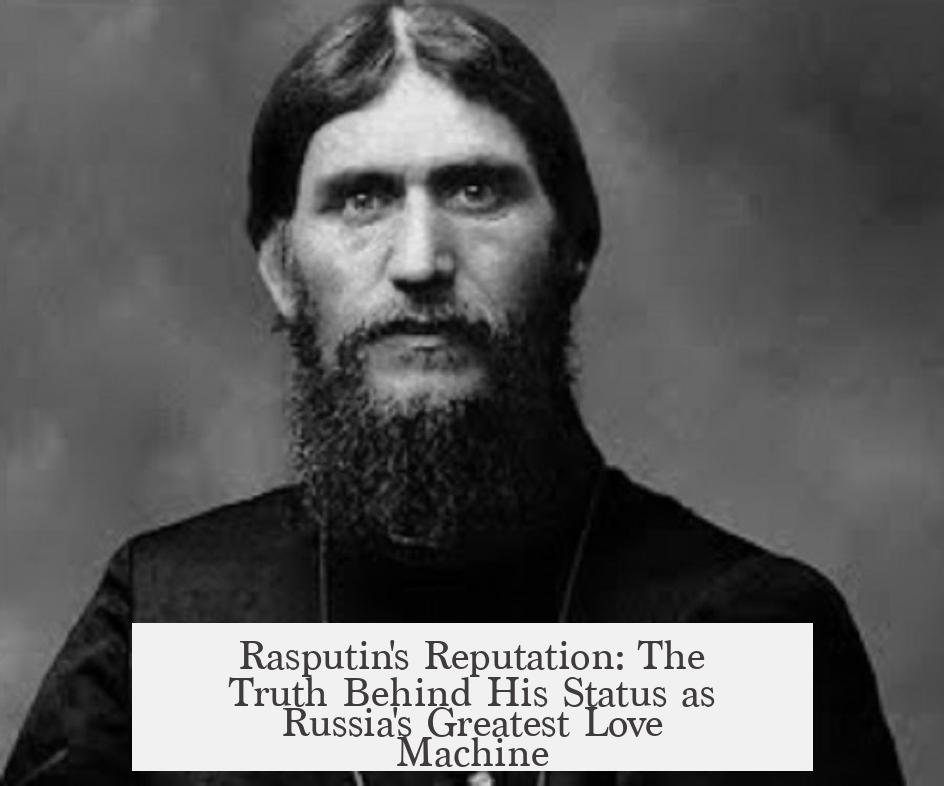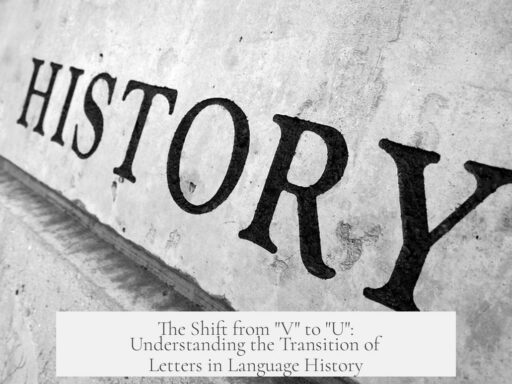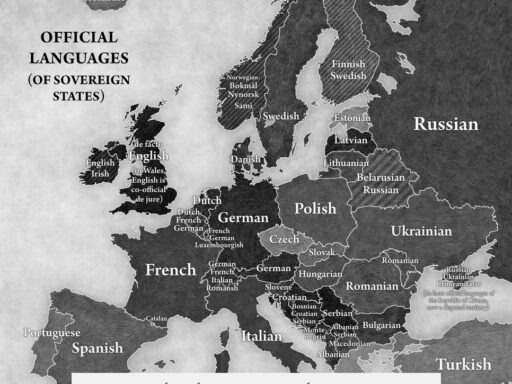Rasputin’s fame as “Russia’s Greatest Love Machine” combines elements of fact and exaggeration. He did have sexual relationships with several high-society women, though claims regarding his involvement with Tsarina Alexandra lack solid evidence and often reflect political gossip. His reputation largely grew through rumors, scandal-mongering, and his own cultivated mystique.
Rasputin, a Siberian peasant who rose to influence the Romanov court, became legendary partly due to his unconventional ascent and partly due to stories of his sexual exploits and drinking. His presence at the Russian imperial court during a turbulent period made him a target for rumors and scapegoating.
Rumors about Rasputin’s debauchery spread widely among court circles and in popular Russian society. His drinking binges and parties with sexual connotations were reported, but these accounts grew in dramatization over time. Several high-born women reportedly became his lovers, but the prevailing claims about his relationship with Tsarina Alexandra remain dubious. The Empress likely trusted him as a spiritual healer because he appeared to relieve her son Alexei’s hemophilia symptoms rather than as a romantic partner.
Rasputin’s actual influence on political affairs was limited. The Tsar himself did not favor Rasputin but tolerated him due to Alexandra’s reliance on him. That Rasputin opposed Russia’s entry into World War I shows he did not dictate major state policies. His role was more spiritual and advisory to the Empress than administrative or political.
The mystique surrounding Rasputin partly arose from his deliberate image crafting. He presented himself as a holy man with deep spiritual insight, setting himself apart from the Westernized St. Petersburg elite. Those who admired him noted his intense eyes, powerful personality, and even his skillful dancing. This fascination spanned all social classes, including peasants and aristocrats, who both viewed him as a figure of awe and charisma.
Scholars like Robert Farrell suggest that, while Rasputin manipulated the Empress’s trust, the relationship was not a conventional love affair. The idea of Rasputin as “Russia’s greatest love machine” finds support in his charm and success with women, but exaggerations, especially those involving the royal family, owe much to political enemies and posthumous scandal mongering.
Following Rasputin’s assassination in 1916, scandalous pamphlets sold widely, portraying him and Alexandra in lurid terms. These accounts, coupled with sensational stories about his death by poisoning, shooting, and drowning, added layers to his myth. Emigre memoirs and foreign films, such as MGM’s “Rasputin and the Empress,” further popularized an image of Rasputin as a lustful villain and manipulator.
Modern popular culture continues to reinforce these myths. The disco hit by Boney M, titled “Rasputin,” repeated his alleged role as the Empress’s lover and as a notorious seducer, entrenching the caricature in global memory. His bearded, wild-eyed image contributes to the lasting fascination, blending fact with fantasy.
Despite some truths about his immoral behavior, Rasputin himself fostered his enigmatic reputation. His success in gaining influence and favor provoked resentment among the St. Petersburg elite. His mystique was both a shield and a weapon.
| Aspect | Fact | Exaggeration/Mud-Slinging |
|---|---|---|
| Sexual Relationships | Had liaisons with multiple aristocratic women | Claims of an affair with Tsarina Alexandra unsubstantiated |
| Political Influence | Limited influence, tolerated by Tsar but opposed WWI entry | Portrayed as ruling behind the throne |
| Public Image | Cultivated holy man persona, admired by many | Depicted as immoral madman in popular media |
| Posthumous Reputation | Assassination and mysterious death enhanced mystique | Scandalous memoirs and films exaggerated debauchery |
- Rasputin’s reputation as a great lover combines real sexual liaisons with social elites but not verified involvement with the Empress.
- His influence on Russian politics was marginal despite claims of secret control.
- Much of the scandalous image is the product of political enemies, gossip, and posthumous sensationalism.
- Rasputin’s self-crafted mystique and charisma contributed to both admiration and hostility.
- Popular culture continues to simplify and exaggerate Rasputin’s sexual exploits and power.
How Justified Was Rasputin’s Fame as Russia’s Greatest Love Machine? Was It Just Mud Slinging?
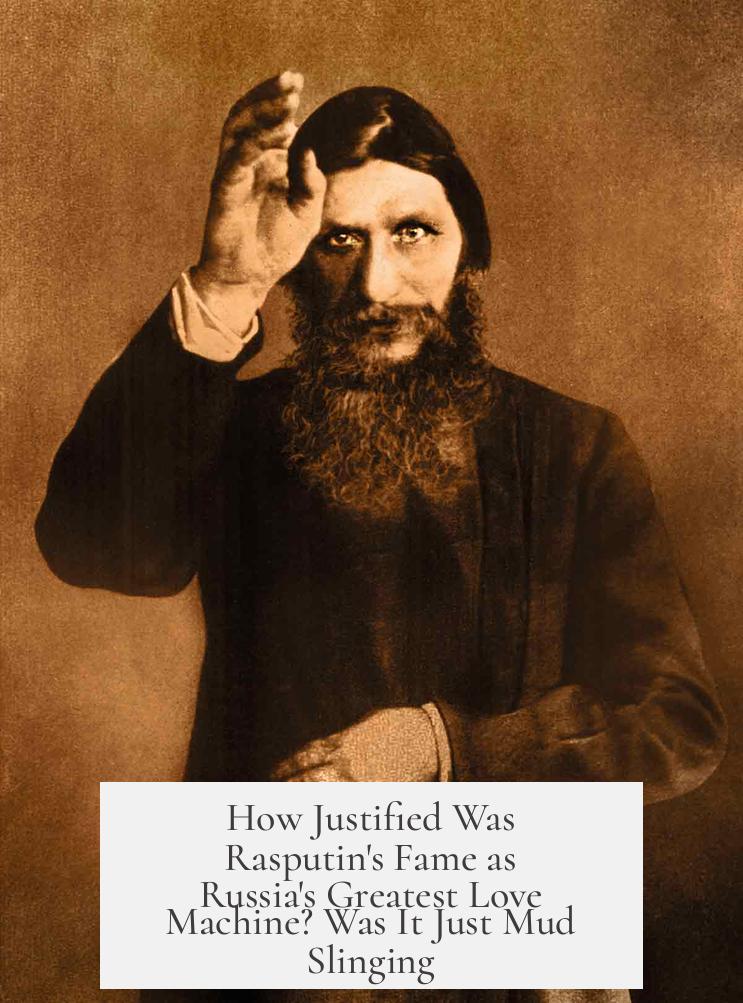
Rasputin’s fame as Russia’s greatest love machine rests on a mix of truth, exaggeration, and outright mudslinging. While he really did charm many high society women and cultivate an enigmatic persona, the wildest tales of his sexual exploits—especially involving the Tsarina—are likely inflated gossip used for political and scandalous ends.
The name Rasputin instantly conjures images of a mystic, a wild party-goer, and a nearly superhuman lover. But was this reputation earned or invented? Let’s unpack the tangled web of fact, fiction, and folklore around this infamous figure.
A Peasant Monk Who Danced His Way Into Hearts—and History
Rasputin’s rise from Siberian peasant to an influential figure in the Russian court is dramatic enough to warrant fascination. Add to that stories of excessive drinking binges and bawdy parties, and you have an irresistible character for legend-making. His allure wasn’t confined to the common folk—high-born women reportedly fell under his spell, though concrete proof of liaisons with the Tsarina Alexandra remains absent.
Photos of him around 1906 show a wild-eyed, unshaven man whose look screams “holy man” and “dangerous rebel” at the same time. Was it just an image he carefully cultivated? Yes and no. Rasputin played into the mystique of a holy mystic, set apart from the polished aristocracy; it worked wonders for his charm.
The Gossip Mill: Where Myth Fueled Rasputin’s Sexual Legend
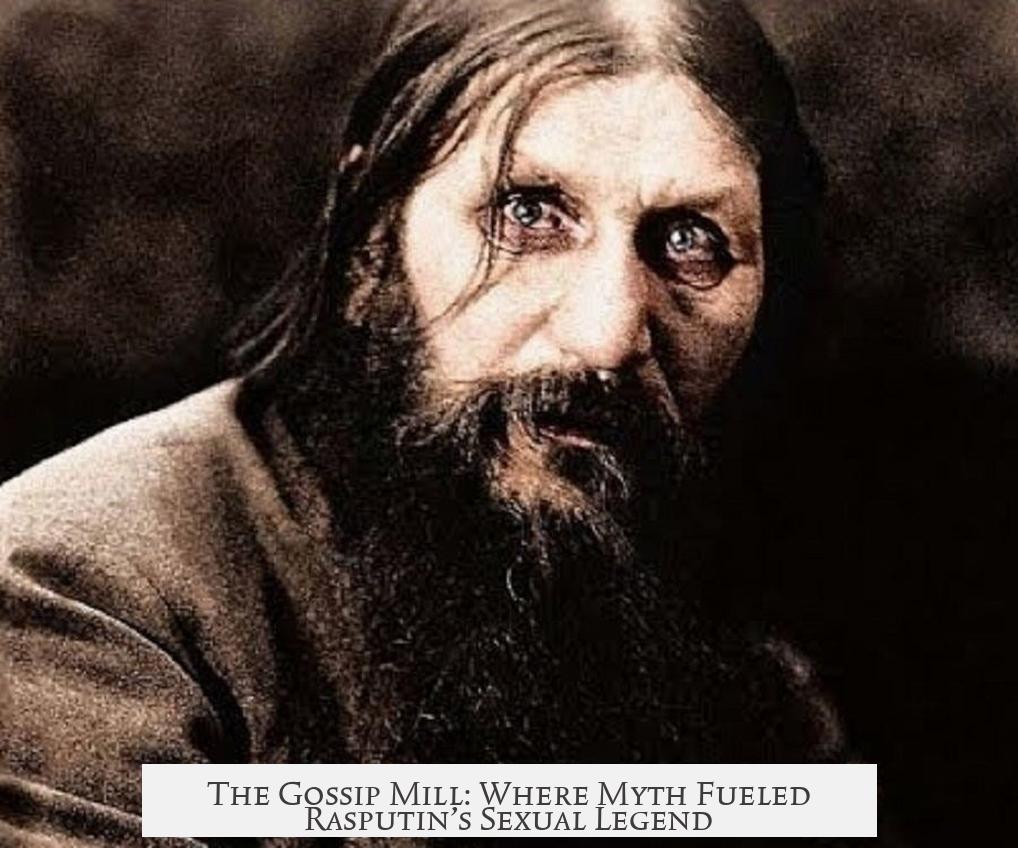
In elite circles, Rasputin’s escapades became larger than life. Court gossip didn’t just report his wild parties and drinking—it embellished them. Rumors ranged from reckless drunken orgies to passionate conquests. Some even cast Alexandra as his lover—but those remain highly doubtful.
This kind of gossip was no accident. Many political enemies used Rasputin’s supposed debauchery to discredit both him and the Tsarina, turning him into a scapegoat for the Romanovs’ troubles. Pamphlets exposing “sexual degeneracy” were pamphlets that sold like hotcakes, especially after censorship loosened.
Was Rasputin Really Russia’s Greatest Lovemaker?
There’s no doubt Rasputin had undeniable personal magnetism. Accounts span from humble peasants to German aristocrats admiring his charm and energy—like his well-noted skills at the Kazachok dance. Far from a shadowy figure confined to the court, he charmed people of all classes.
Robert Farrell, a historian, argues the idea of Rasputin as the Tsarina’s lover is an exaggeration. Instead, Alexandra’s relationship with Rasputin was one-sided: she trusted his healing powers for her son’s hemophilia, giving him access but not romantic involvement. Meanwhile, Rasputin did indulge in lust and power hunger, fueling his reputation.
So, was the “greatest love machine” tag a complete fabrication? No. There was truth to his allure and sexual conquests among high society women. Yet, wartime enemies and scandal mongers turned that partial truth into a weapon, obscuring the real picture.
Limited Political Influence: A Man Humored, Not Feared
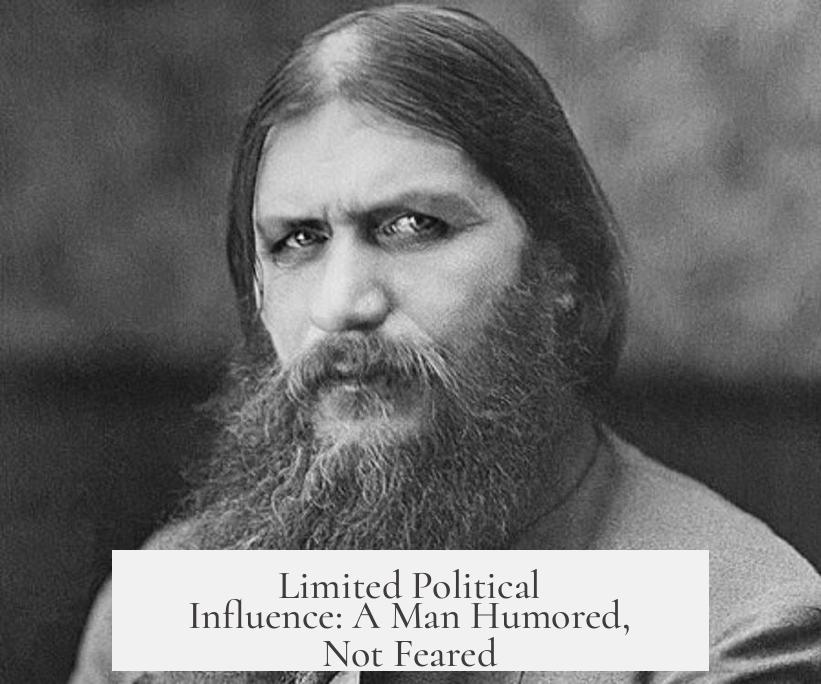
Despite rumors of Rasputin’s political clout—some claimed he “ruled Russia” from behind the throne—his actual influence was limited. Nicholas II personally disliked Rasputin but tolerated him for Alexandra’s sake and the alleged healing of their son.
The most telling evidence: Rasputin’s stance against Russian entry into World War I, which showed he didn’t have the final say on major policy decisions. If anything, his political sway was exaggerated by people eager to blame anyone but themselves for Russia’s turmoil.
The Posthumous Myth and Mud Slinging Machine
After Rasputin’s assassination, his legend only grew wilder. Pamphlets exposing lurid tales sold in a newly free press. Foreign memoirs by Russian émigrés and Hollywood films like Rasputin and the Empress painted him as a dangerous seducer and power ultimately corrupting the throne.
Popular culture has embraced the myth with gusto. Remember Boney M’s disco hit “Rasputin”? It brashly labeled him “Russia’s greatest love machine”—recasting old rumors into catchy lyrics and dance beats. Even today, the iconic image of Rasputin defies clear truth, mixing some reality with plenty of legend.
Rasputin: A Master of His Own Mystique
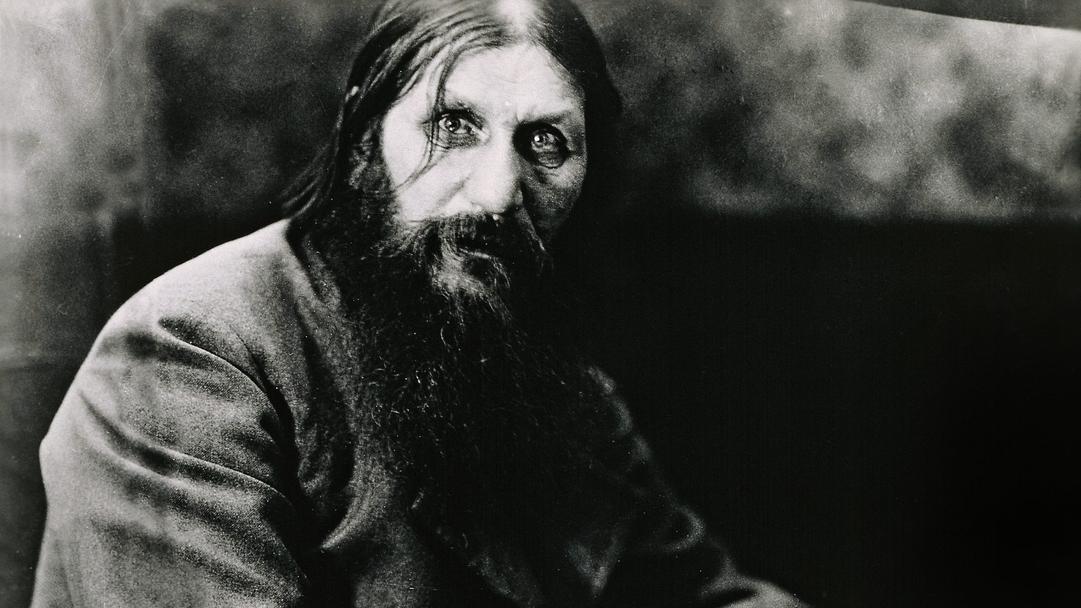
It’s important to realize Rasputin wasn’t just a victim of gossip. He crafted parts of his public image—wild, mystical, unorthodox—to stand out from the refined, Westernized aristocrats. That magnetic, rebellious style is central to understanding his appeal and the jealousy it inspired from St. Petersburg’s elite.
His ability to navigate various social classes—winning genuine admiration and some degree of adoration—set him apart and made him an irresistible subject for scandal and myth. Many wanted to hate him because he represented something unpredictable, a challenge to the established order.
So, How Justified Is Rasputin’s Fame as the Greatest Love Machine?
In short, partly justified—but not quite in the way popular legend suggests. Rasputin’s sexual relationships with women of the upper class are documented. His charm transcended boundaries, captivating peasants and aristocrats alike.
But the lurid claims—especially those involving the Empress—are fuzzy at best and mostly political mudslinging at worst. His limited political role, despite rumors, suggests his power came less from state control and more from personal mystique and manipulation.
By examining the facts, we see a man who was both a product and a victim of his time. A scandal magnet, a charismatic mystic, and yes—a man whose love life was far from boring but not as wildly exaggerated as rumor would have it.
Lessons From Rasputin’s Story
- Beware the power of gossip. Scandal can warp facts, especially when political stakes are high.
- Image matters. Rasputin’s self-crafted persona was a key weapon in gaining influence and igniting hatred.
- Context is everything. Historical figures become legends for reasons beyond mere truth.
Curious what Rasputin’s story tells us about how we interpret fame today? It’s a reminder to look beyond sensational headlines and ask: who benefits from the stories we hear? Sometimes legends like Rasputin’s sexual escapades are not just tales, but tools in bigger power games.
